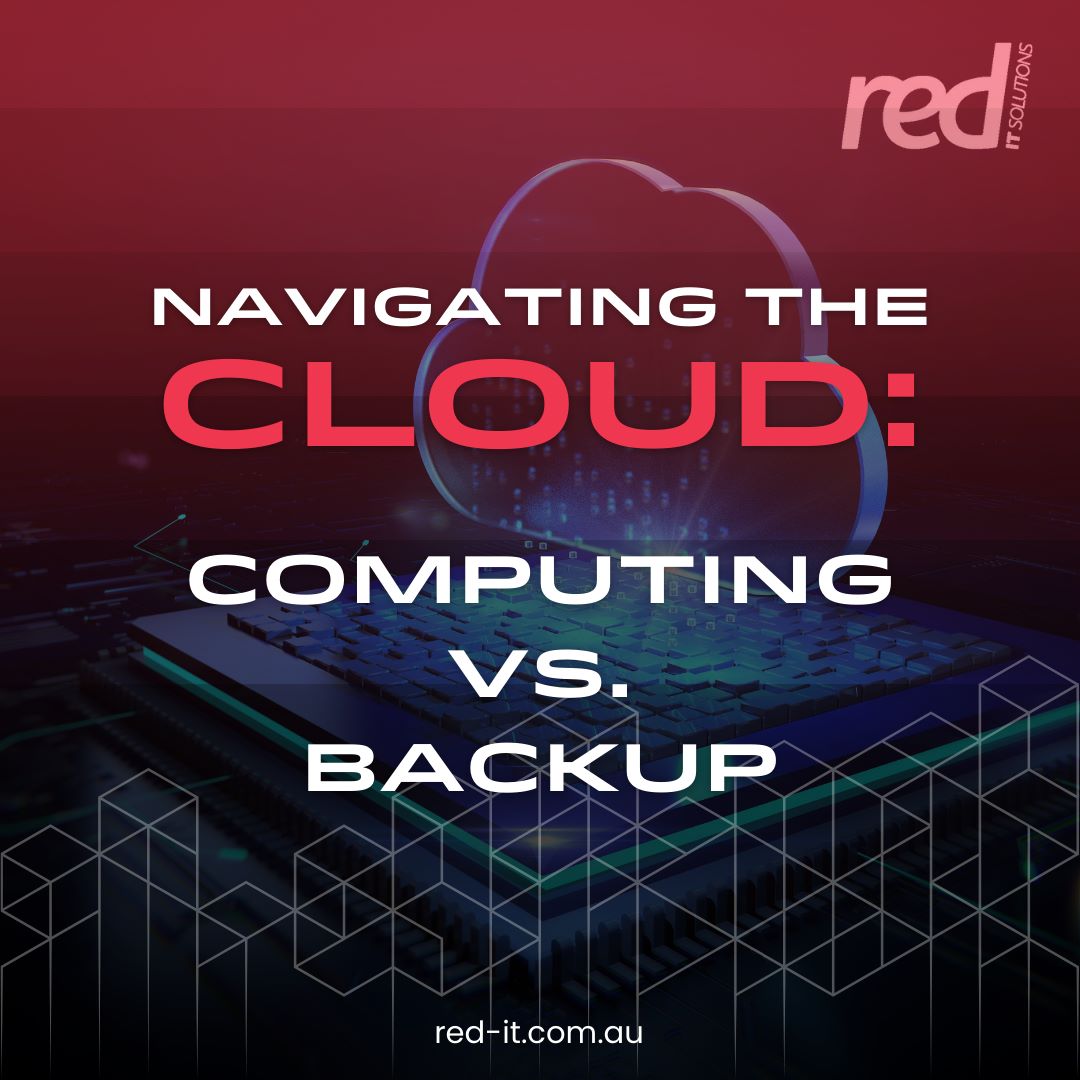
However, with the vast array of services the cloud offers, it’s crucial to understand the distinctions between cloud computing and cloud backup. Both play pivotal roles in modern IT strategies, but they serve fundamentally different purposes.
Cloud Computing: The Engine Room of Modern Business
Cloud computing is akin to leasing a high-performance car; it provides the horsepower and agility needed for businesses to race ahead. It involves accessing computing services such as servers, storage, databases, and software over the Internet. This model allows businesses to utilise sophisticated computing resources without the capital expenditure of owning and maintaining physical hardware. Whether it’s deploying applications, storing vast amounts of data, or crunching numbers at scale, cloud computing provides the flexibility and scalability essential for growth and innovation. It’s particularly beneficial for Australian businesses looking to stay agile in a competitive market, offering the ability to quickly respond to changing demands.
Cloud Backup: The Safety Net
On the other hand, cloud backup is the insurance policy every business needs but hopes never to use. It focuses on copying and storing data remotely to ensure it can be recovered in the event of loss, corruption, or a disaster. This off-site data preservation is crucial for business continuity, providing a fallback when the unexpected occurs. In a landscape where data is one of the most valuable assets a business holds, having a robust cloud backup solution is non-negotiable. It’s not just about avoiding data loss; it’s about ensuring that operations can continue with minimal disruption, safeguarding the business’s reputation and client trust.
Understanding the Difference
The distinction between cloud computing and cloud backup is more than academic. It informs how businesses plan their IT infrastructure, manage costs, comply with regulations, and protect against cyber threats. For instance, while cloud computing might drive day-to-day operations with its processing power and application hosting, cloud backup ensures that the data fueling those operations is protected against loss and quickly recoverable.
Strategic IT Planning: Businesses need to allocate resources wisely between computing power and data protection. Balancing operational needs with robust backup strategies is key to a comprehensive IT approach.
Cost Management: Although both cloud computing and backup offer cost savings over traditional models, understanding their different cost structures helps in budgeting and financial planning.
Compliance and Security: Australian businesses face stringent data protection regulations. Knowing how cloud computing and backup fit into the regulatory landscape assists in crafting compliant and secure IT strategies.
Disaster Recovery: Recognising cloud backup’s role in disaster recovery underscores its importance in maintaining business continuity. While cloud computing enables efficiency and innovation, cloud backup protects against the risk of data loss.
Conclusion: A Holistic Approach to Cloud Technology
For Australian businesses navigating the cloud, understanding the nuanced roles of cloud computing and cloud backup is foundational. Red IT specialises in providing tailored cloud solutions that empower businesses to leverage both aspects of cloud technology effectively. Our expertise ensures that your operations are not only efficient and innovative but also secure and resilient. Embracing a holistic approach to cloud technology with Red IT means preparing your business for success in today’s digital world and beyond.
To learn more about how cloud computing and cloud backup can transform your business operations, reach out to Red IT today. Let’s chart a course through the cloud together.




